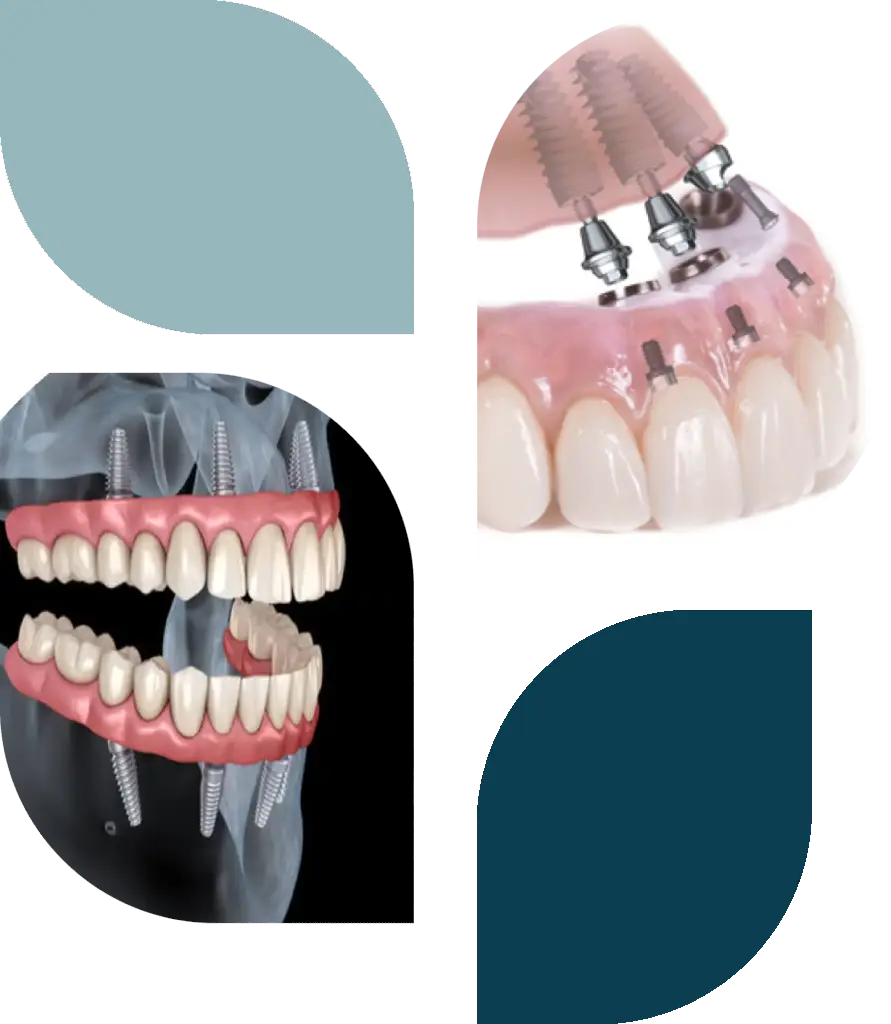What are Dental Implants?
Dental implants are tiny titanium fixings that a dentist with specialized training in implant dentistry places in the mandible to act as anchors for a prosthetic construction that replaces lost or broken teeth.
A loss of jawbone and a gradual flattening of the gum choreography are also related to several missing or badly positioned teeth. While it is possible to rebuild this in certain situations through a series of treatments including different grafting techniques, it is much more predictable to replace the missing gum component as part of the prosthetic structure design in order to get a more pleasing visual result when replacing a full set.
The more implants we use, the more difficult it is for the patient to clean the connections between the implant anchors and the prosthetic structure. These connections must be accessible for cleaning. Reducing the number of implants needed for sufficient support ultimately depends on your surgeon's assessment of various factors, including the biting forces and bone quality as assessed by x-rays or during surgery. Reducing the number of implants also makes cleanliness and maintenance easier.


Dental Implants History
In the 1950s, osseo-integration was accidentally found by DrPer-Ingvar Brånemark, which paved the way for the creation of dental implants.
Dr Per-Ingvar Brånemark studied the healing process by implanting titanium-encased optical equipment into rabbits' lower legs. To his surprise, the titanium had bonded into the bone and was immovable when the research period finished and he went to remove the implants.
He concluded that if the body could withstand titanium's long-term presence, the metal could be used to make anchors for prosthetic teeth after learning that titanium is recognized by the immune system as though it were its own biologic substance.
Gosta Larsson, who was 35 years old and without teeth in his lower jaw, was the first patient to benefit from this procedure in 1965. He wore a loose denture till before the first implant procedure. Larsson was able to utilize his teeth till his death four decades later owing to a successful treatment that included the installation of four implants.

